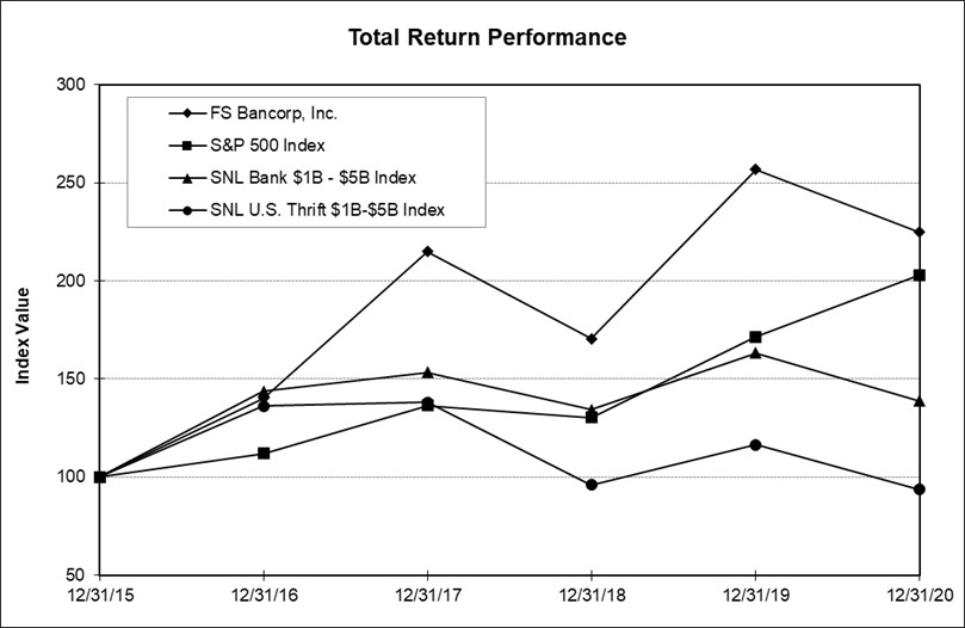The primary market area for business operations is the Seattle-Tacoma-Bellevue, Washington Metropolitan Statistical Area (the “Seattle MSA”). Kitsap, Clallam, Jefferson, Thurston, Lewis, and Grays Harbor counties, though not in the Seattle MSA, are also part of the Company’s market area. This overall region is typically known as the Puget Sound region. The population of the Puget Sound region as estimated by Puget Sound Regional Council was 4.3 million in 2020, over half of the state’s population, representing a large population base for potential business. The region has a well-developed urban area in the western portion along Puget Sound, with the north, central and eastern portions containing a mixture of developed residential and commercial neighborhoods and undeveloped, rural neighborhoods.
The Puget Sound region is the largest business center in both the State of Washington and the Pacific Northwest. Currently, key elements of the economy are aerospace, military bases, clean technology, biotechnology, education, information technology, logistics, international trade and tourism. The region is well known for the long presence of The Boeing Corporation and Microsoft, two major industry leaders, and for its leadership in technology. Amazon.com has expanded significantly in the Seattle downtown area. The workforce in general is well-educated and strong in technology. Washington State’s location with regard to the Pacific Rim, along with a deep-water port has made international trade a significant part of the regional economy. Tourism has also developed into a major industry for the area, due to the scenic beauty, temperate climate and easy accessibility.
King County, which includes the city of Seattle, has the largest employment base and overall level of economic activity. Six of the largest employers in the state are headquartered in King County including Microsoft Corporation, University of Washington, Amazon.com, King County Government, Starbucks, and Swedish Health Services. Pierce County is the second most populous county in the state and its economy is also well diversified with the presence of military related government employment (Joint Base Lewis-McChord), along with health care (the Multicare Health System and the Franciscan Health System). In addition, there is a large employment base in the economic sectors of shipping (the Port of Tacoma) and aerospace employment (Boeing). Snohomish County to the north has an economy based on aerospace employment (Boeing), health care (Providence Regional Medical Center), and military (the Everett Naval Station) along with additional employment concentrations in biotechnology, electronics/computers, and wood products.
In 2020, the median household income for King County was $95,000, compared to $74,000 for the State of Washington, and $62,000 for the United States.
The United States Navy is a key element for Kitsap County’s economy. The United States Navy is the largest employer in the county, with installations at Puget Sound Naval Shipyard, Naval Undersea Warfare Center Keyport and Naval Base Kitsap (which comprises former Naval Submarine Base Bangor, and Naval Station Bremerton). The largest private employers in the county are the Harrison Medical Center and Port Madison Enterprises. Clallam County depends on agriculture, forestry, fishing, outdoor recreation and tourism. Jefferson County’s largest private employer is Port Townsend Paper Mill and the largest employer overall (private and public) is Jefferson Healthcare.
Thurston County includes Olympia, home of Washington State’s capital and its economic base is largely driven by state government related employment. In 2020, the median household income for Thurston County was $73,000.
Lewis County is supported by manufacturing, retail trade, local government and industrial services. Grays Harbor County has been historically dependent on the timber and fishing industries, but also relies on tourism, manufacturing, agriculture, shipping, transportation, and technology.
Unemployment in Washington was an estimated 7.2% at December 31, 2020, closely paralleling national trends as disclosed in the U.S. Bureau of Labor Statistics reflecting the impact of COVID-19 over the prior year. King County’s estimated unemployment rate was 6.8%, an increase from 3.5% in the prior year. The estimated unemployment rate in Snohomish County at year end 2020 was 7.8%, an increase from 2.4% at year end 2019. Kitsap County’s unemployment rate was 7.8% at December 31, 2020, compared to 4.1% at December 31, 2019. At December 31, 2020, the estimated unemployment rate in Pierce County was 7.6%, up from 4.8% at December 31, 2019. Grays Harbor County’s, Thurston County’s, and Lewis County’s unemployment rates rose to 10.1%, 6.5%, and 7.4%, respectively at December 31, 2020, compared to 7.0%, 4.4%, and 6.0% at year end 2019, respectively. Outside of the Puget Sound area, the Tri-Cities market includes two counties, Benton and Franklin, and we have two full-service branches in Clallam County and two in Jefferson County. The estimated unemployment rate in Benton County at year end 2020 was 6.4%, up from 5.4% at year end 2019. At December 31, 2020, the estimated unemployment rate in Franklin County was slightly up to 7.4%, from 7.3% at
